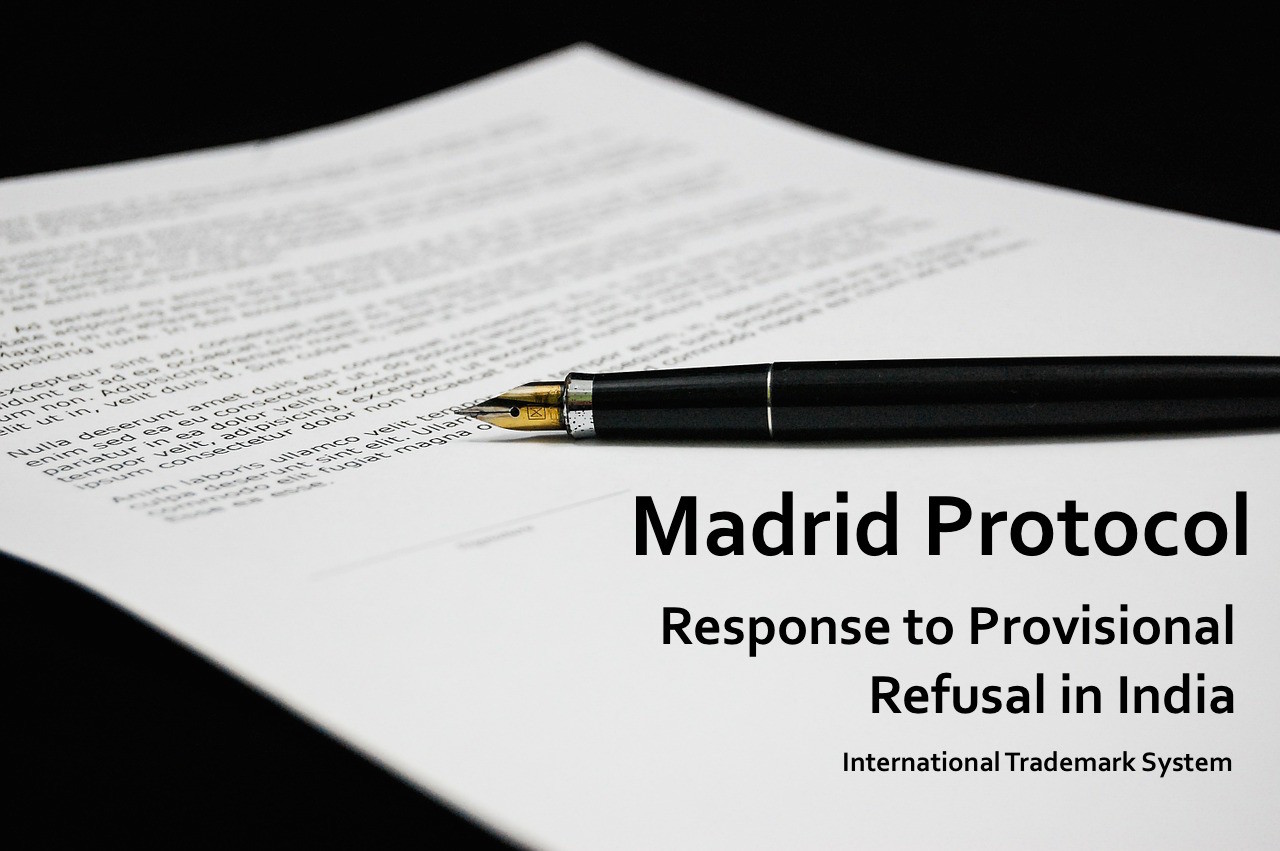In our previous blog post, you have seen how to file an international trademark application under the Madrid Protocol. This blog post will explain the process for filing a response to the provisional refusal in India. The Applicant must file responses to an international application under the Madrid Protocol under three circumstances:
1. Response to any irregularity raised by the International Bureau of WIPO.
2. Response to provisional refusal raised by the designated contracting party; and
3. Response to third-party opposition.
Response to irregularities:
The International Bureau of WIPO scrutinizes international applications from the offices of origin. This scrutiny is limited to the formalities of the application. If there are any irregularities, they are communicated to the Applicant as well as to the office of origin. According to Rule 11(2) (1) under Madrid, any irregularity must be responded to within three months from the date of notification through the office of origin.
The office of origin for international applications in India is the Trademarks Registry [Trademark Office], India. After the trademark office receives the notification of irregularities from WIPO, it will classify the irregularities to determine what needs to be rectified by the office and by the Applicant.
The trademark office will then generate a letter stating the rectifications to be done by the Applicant and send it across to the Applicant. The Applicant then has one month (from the date of communication) to respond to the trademark office.
After the Applicant has responded, the trademark office will forward the response to the International Bureau. Please note that all the communications above are made by electronic means only.
Response to Provisional Refusal in India:
The International Bureau, after the initial scrutiny, publishes the mark in the WIPO Gazette and notifies each designated contracting party. The designated contracting party then examines the application according to the laws of that designated country.
So, for instance, if India is a designated contracting party in an international application, then the patent examiner will examine the international application according to the Trademarks Act 1999, India.
Within 18 months of the notification by WIPO, the trademark office (designated party) must send a notification of provisional refusal (objection or opposition) to the International Bureau. The International Bureau will then record the provisional refusal and communicate the same to the Applicant.
The international application must ordinarily be examined within six months from the date it was notified. Also, a supervising officer must approve any draft of provisional refusal generated by an examiner.
For filing a response to the objection, the Applicant can engage a trademark attorney/agent, who is the expert, to draft the response to the provisional refusal in India.
Even after two months of notification of the provisional refusal in India, if no response is received from the Applicant, the trademark office can communicate the confirmation of provisional refusal to the International Bureau. However, before the end of 2 months, the Applicant can seek more time for filing a response from the office of the designated country [trademark office]. The trademark office may grant a reasonable extension within which the response must be filed.
If the application is approved, it will be published in the Trademarks Journal.
Response to third-party opposition:
After the Trademark is published in the Trademarks Journal, it is open to opposition by any third party. The procedure is the same as any national trademark.
In India, an opposition may be filed by a third party within four months of the publication of the Trademark in the Journal. For filing a response to the opposition, the Applicant has to engage a trademark agent/attorney.
On the whole, any objection or opposition against an international trademark has to be communicated to the International Bureau within 18 months. Suppose the 18 months are going to lapse and the period for the opposition is yet to lapse; the designated country can inform the International Bureau that the ex-officio examination is complete and that the mark is still open to the opposition.
Apart from this, filing a response under the Madrid Protocol is almost the same as filing a response for the national registration of the Trademark. A critical point that International Applicants need to keep in mind is that, when filing an international Trademark, it is essential to engage a professional trademark agent/attorney who has an address in the designated country [trademark office] to send and receive communications from the trademark office of the designated country and the International Bureau.




